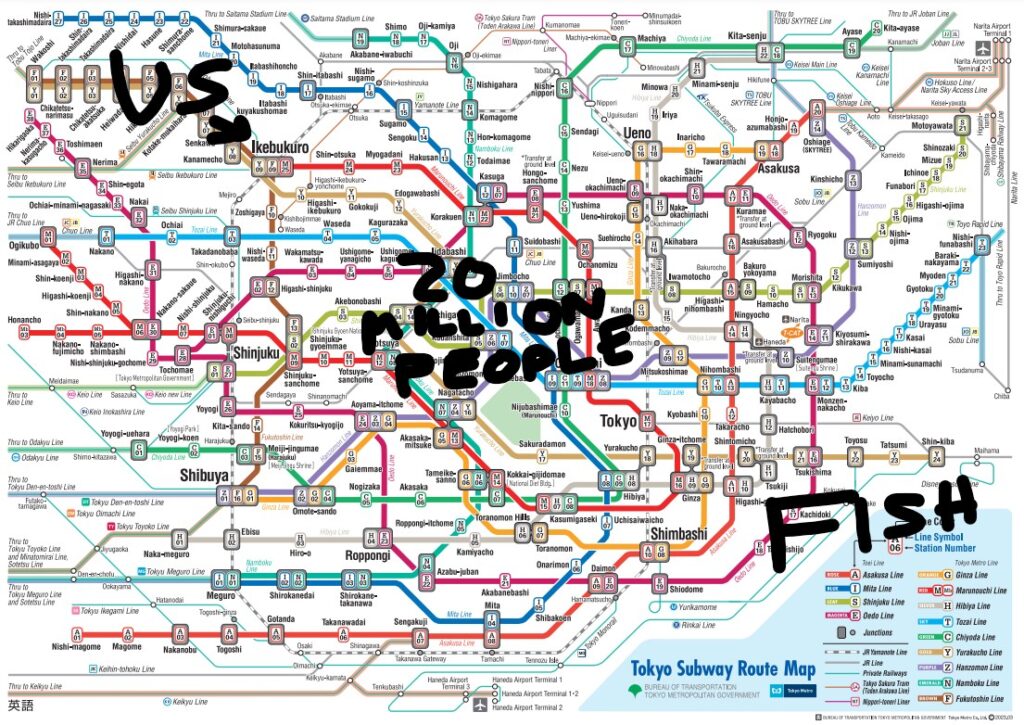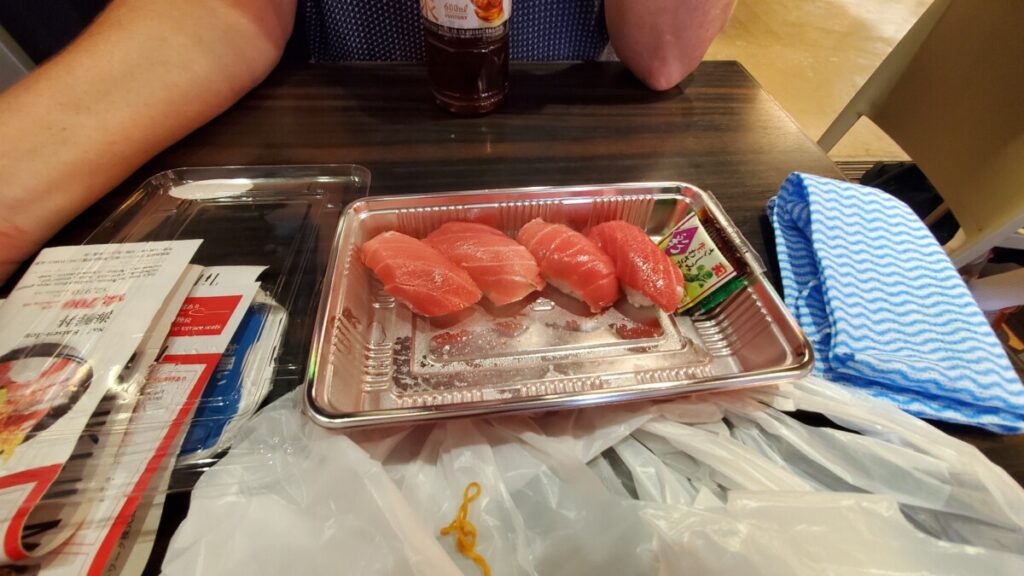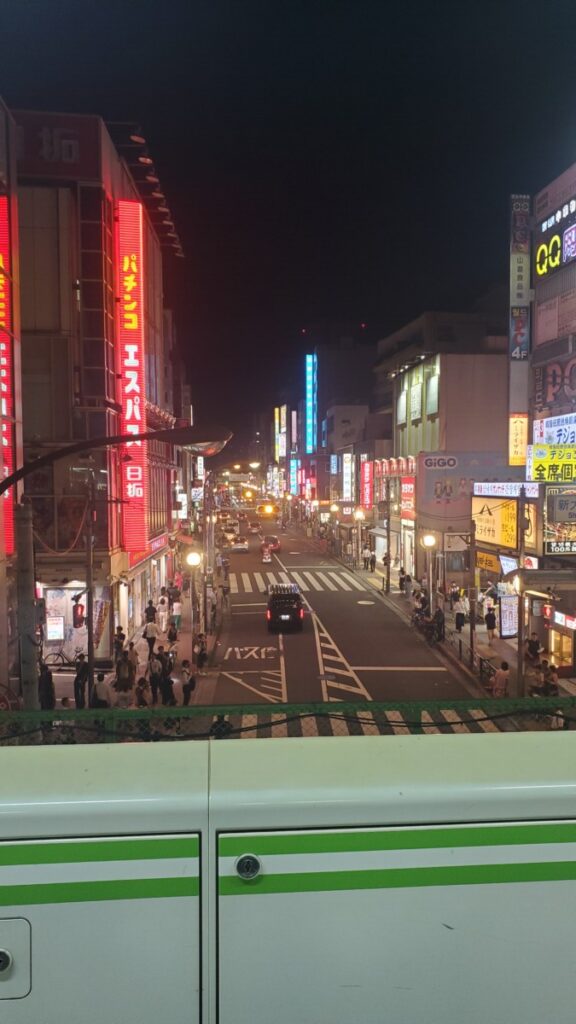The main Tokyo fishmarket used to be in the Tsukiji neighborhood. If you got there at 5 AM, you could watch tuna being auctioned off, then dodge forklifts to get to amazingly fresh food stalls.
A few years back, it was decided it might be better to separate the “tuna-and-forklifts” portion of the operation from the “crowds of people trying to get breakfast” part, and the wholesale market moved out to Toyosu. Not too far from the art exhibit we had been to the night before, in fact. The outer market with the food stalls largely remained in Tsukiji.
Since we didn’t want to spend the night in a karaoke parlor, we had gone back to our hotel the night before. But since we wanted to get breakfast in Tsukiji, we hopped on the train promptly at 8.
8 AM. Rush Hour. In Tokyo. On a train headed directly into the city.
I have drawn a helpful map to explain the situation.
That 20 million people is a made up number, of course. 40 million people live in the greater Tokyo metro area, but how many of them were really between us and breakfast?
A lot.
We boarded a subway train with 12 cars, the platform for which was longer than a city block. This train runs every 5 minutes at rush hour. Nonetheless, when it arrived it was as densely packed as I had ever seen a subway car. Despite this, a sold twenty or so people, including us, pushed into the car via our door alone. (This was repeating itself at all three doors on all twelve cars.) As standees, you are crushed together with everyone around you so solidly that breathing becomes restricted. For 40 minutes.
I can now say a) that I have experienced one of the great wonders of the world that is the Tokyo metro at rush hour. and b) I have no desire to ever do so again.
But we made it to our station alive, and started walking towards the market. We stopped to investigate an interesting temple, which is a strange mixture of Japanese, Indian, and Western architectural styles.

This is the Tsukiji Honganji temple, and it dates from the 1930s, replacing one that was destroyed in the Great Kanto Earthquake. It belongs to the same school of Buddhism as the giant wooden temple just north of the Kyoto train station, Jodo Shinsho, or “True Pure Land” Buddhism. It’s definitely unique among the temples we visited.
But we weren’t here for temples, we were here for fish. The Tsukiji Outer Market is a maze of little twisty passages, all alike. As always, food needs to be consumed more or less where it was purchased. We started with some absolutely ridiculously good sushi, to the point where we had already eaten half of it before we even remembered to take a picture. It was also insanely cheap.
At this point, we pretty much fell down in the “photography” department. According to my notes, we had Sushi, Squid on a Stick, Grilled Tuna Skewers, Fresh Fruit Sodas, and a Fish Burger. This was all a result of simply wandering up and down the tiny market streets and pointing at what looked good. The fish burger in particular was excellent, and we’d never have found the tiny shop selling them if it weren’t for watching so many YouTube videos in advance – the shop is down a tiny offshoot alley that we’d likely never even have spotted.
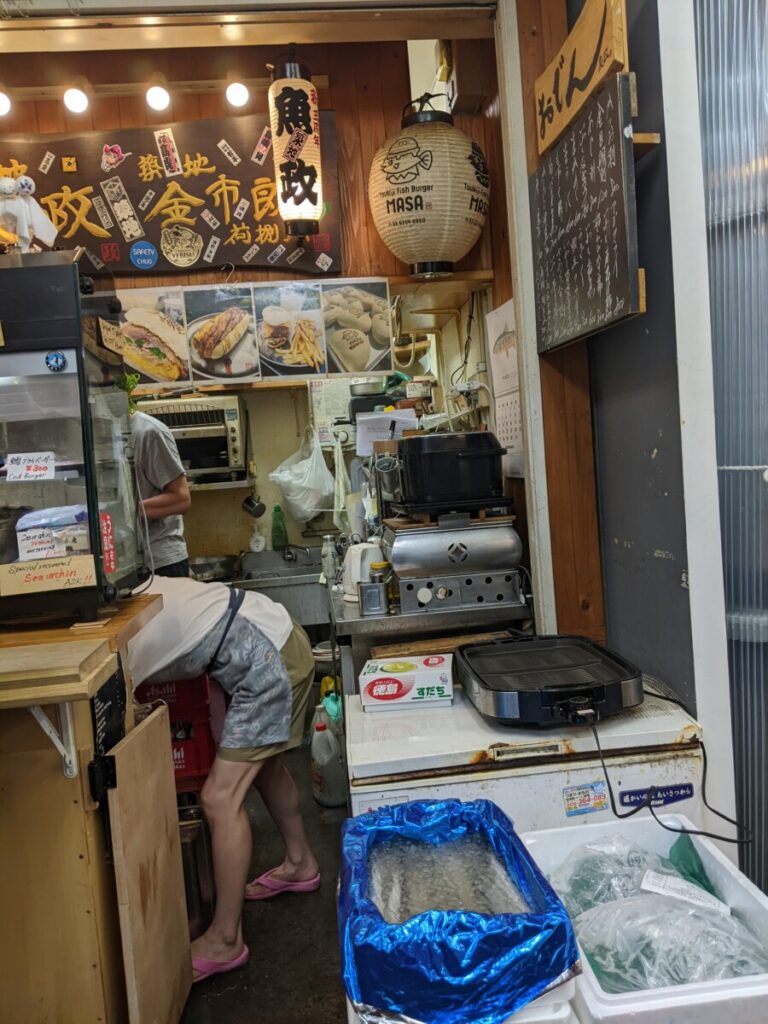
The case on the left side of the picture has fish of various types. You pick your fish, and they turn it into a fried fish sandwich while you wait.

It may look humble, but it was outstanding. The sushi was outstanding. The squid on a stick was outstanding. This guy was probably outstanding, I have no idea, we didn’t talk to him.
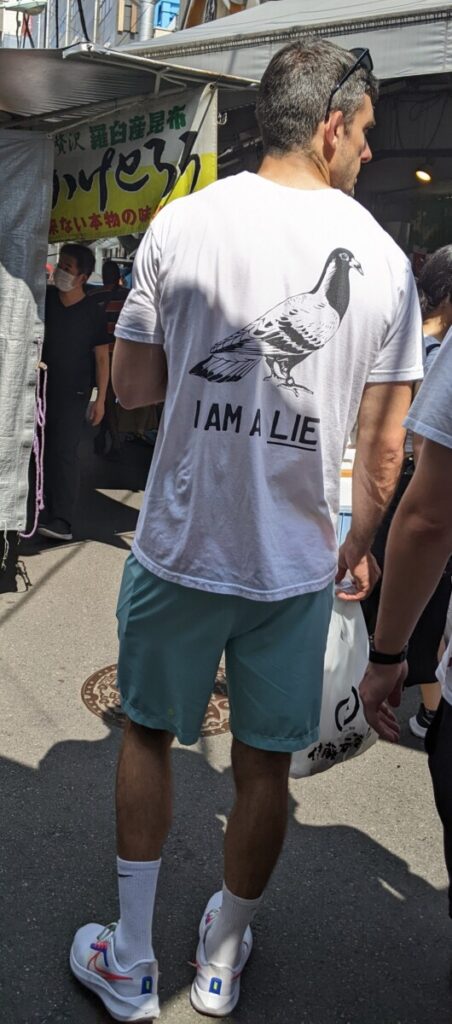
Our bellies full, it was time to go elsewhere. Our plan was to visit the neighborhood of Shimokitazawa, which was described to us as a neighborhood with a cool, hipster vibe. “Cool” would be nice… I know I haven’t bitched about it for a few paragraphs, but it was still incredibly hot. Every day had a rhythm of “do stuff until we can’t face moving any more, then go find some A/C”.
On the train, however, we realized we would be passing right by Harajuku, and decided to hop off and see if the woodblock museum that we missed on Saturday was open. Nope. Change of exhibits. We did, however, get a chance to walk down Takeshita street, which was merely crowded, rather than bonkers like Saturday. Sadly, we appear to have neglected to take any pictures, so here’s one from a previous day of a cat flipping you off.

After that, we did make it out to Shimokitazawa. As promised, it had a cool, hipsterish vibe. Lots of vintage shops. Lots of coffee shops. Lots of statues of Mickey Mouse, destroying a guitar.
OK, just one of those.

Still, it was a fun place to wander around. Very quiet, which was a nice change from the chaos of the last few days. When we needed our next AC break, we found a coffee shop with absurd ice cream sodas.
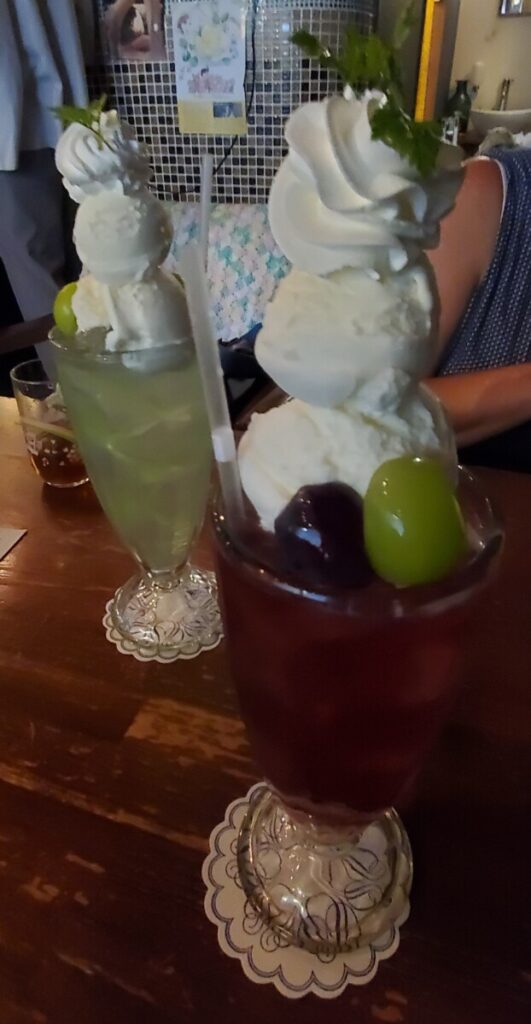
We weren’t really hip enough to be allowed in here, to be clear.
From here, we decided to go check out a mall called “Nakano Broadway”, which has been described as “Akihabara West.” From the subway, you walk down a covered shopping street to the mall entrance. 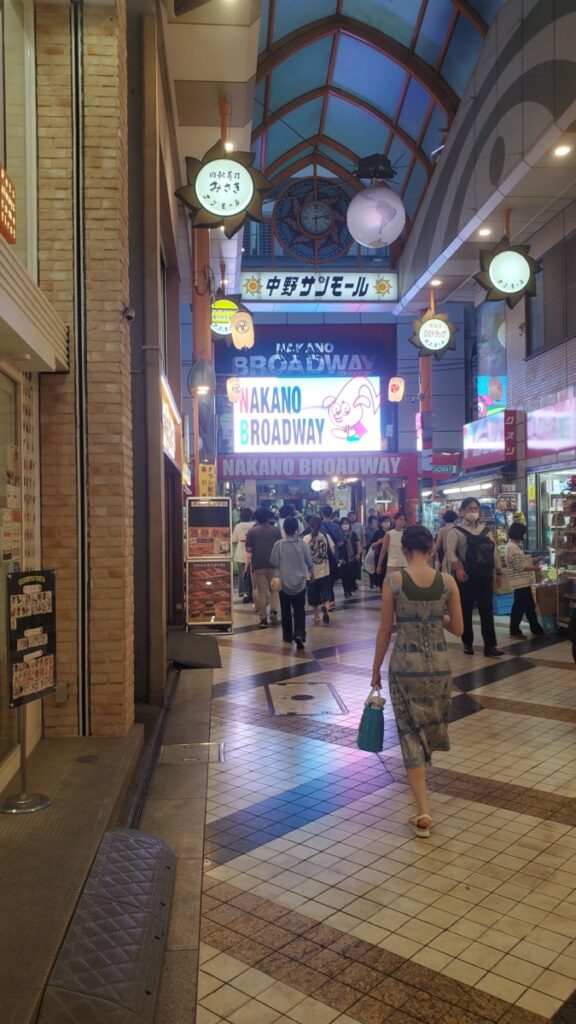
The mall itself is four BIG floors with a number of different stores. A lot of them sell watches, for some reason. But the biggest category is anime merchandise. Figurines upon models, upon clothing, upon books, upon figurines. So many figurines.
The most interesting part was the consignment sections. A number of shops consisted of nothing more than rows of floor to ceiling, neon lit glass cubes. Each cube was rented by a seller who was looking to display and sell their used anime goodies. I don’t know how the actual sale process works, since I didn’t actually want to spend several hundred dollars on a rare Evangelion figurine.
After this, we decided to split up – I went to a nearby arcade to play some rhythm games, and Leigh went to look for Japanese skin care products. While walking to the arcade, I snapped the picture on the right. The one on the left is from Shimokitazawa. Strikingly similar composition. Shows how much imagination I have. At least you can’t see my finger in the left one.
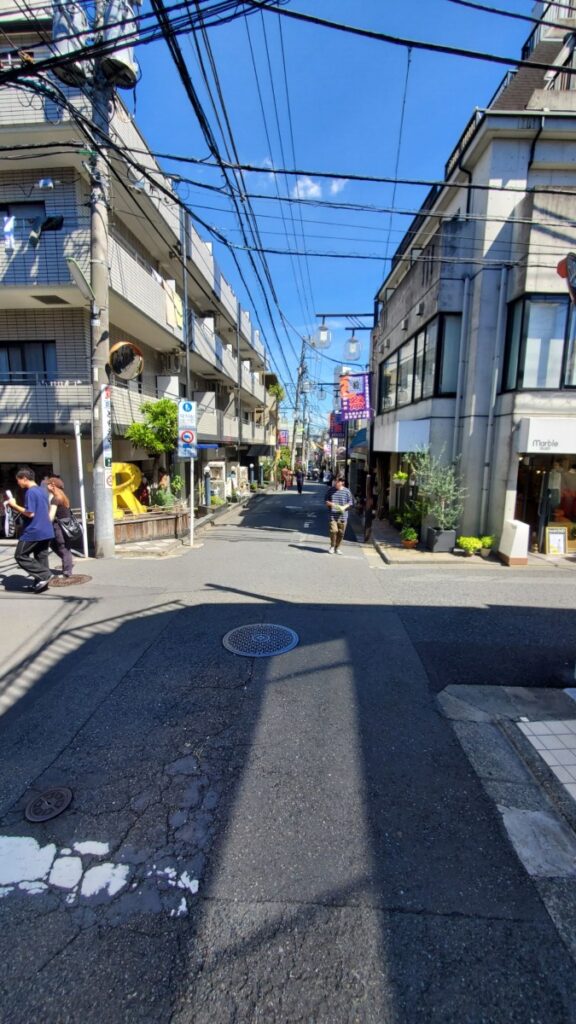
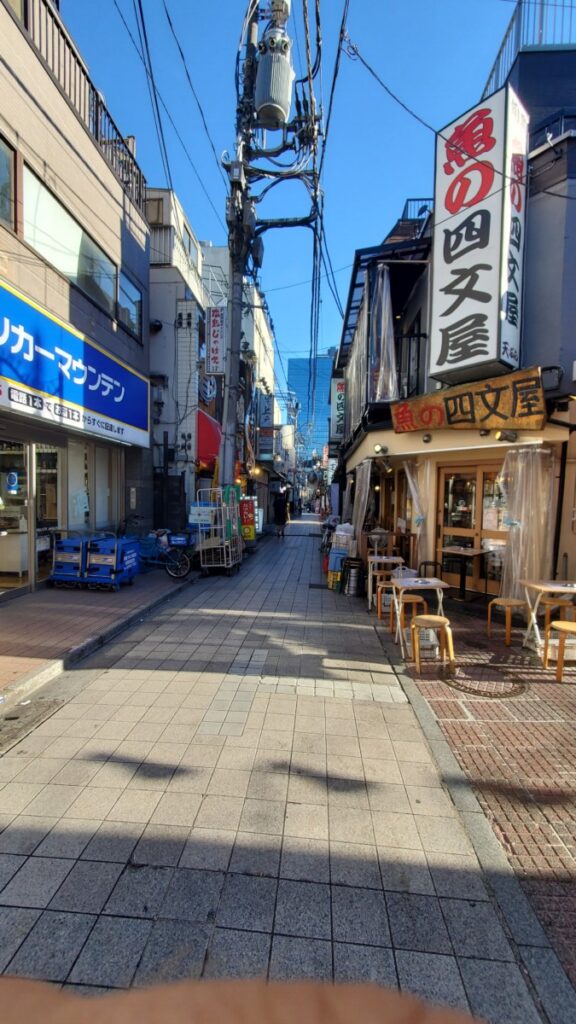
Rhythm games in Japan continue to be incredibly fun, and very good value – I played for nearly an hour for about 3 bucks.
Dinner time, and it was our last chance to visit an Ainu restaurant I had been wanting to check out. The Ainu people are the indigenous population of Hokkaido, Japan’s northern island. Like indigenous peoples everywhere else in the world, their culture has been violently suppressed for generations, and what’s been preserved is due to the dedicated efforts of the survivors.
My meal of wild boar and salmon broth was fantastic, and the hosts were extremely friendly. The restaurant’s name is Harukor Ainu Restaurant, it’s near the Shin-Okubo station on the Yamanote line (just north of Shinjuku), and if you’re in Tokyo, I strongly recommend a visit.
And with that, it was time to head back to our hotel and pack. Over more than two weeks, we had Japanned all the Japan we could possibly handle. Time to go home.

